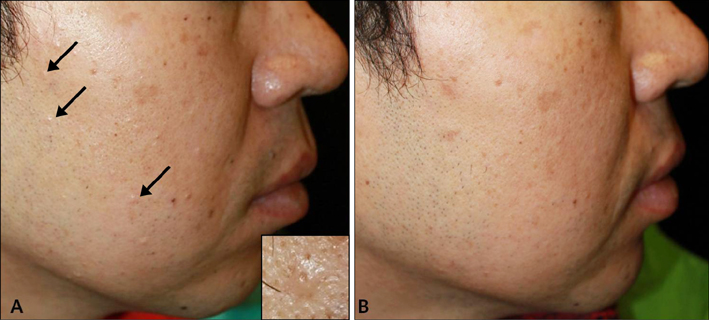Ann Dermatol.
2016 Apr;28(2):271-272. 10.5021/ad.2016.28.2.271.
A Case of Cyclosporine-Induced Sebaceous Hyperplasia in a Renal Transplant Patient Successfully Treated with Isotretinoin
- Affiliations
-
- 1Department of Dermatology, Yeouido St. Mary's Hospital, College of Medicine, The Catholic University of Korea, Seoul, Korea. hjpark@catholic.ac.kr
- KMID: 2171397
- DOI: http://doi.org/10.5021/ad.2016.28.2.271
Abstract
- No abstract available.
MeSH Terms
Figure
Reference
-
1. Perrett CM, McGregor J, Barlow RJ, Karran P, Proby C, Harwood CA. Topical photodynamic therapy with methyl aminolevulinate to treat sebaceous hyperplasia in an organ transplant recipient. Arch Dermatol. 2006; 142:781–782.
Article2. McDonald SK, Goh MS, Chong AH. Successful treatment of cyclosporine-induced sebaceous hyperplasia with oral isotretinoin in two renal transplant recipients. Australas J Dermatol. 2011; 52:227–230.
Article3. Burton CS, Sawchuk WS. Premature sebaceous gland hyperplasia: successful treatment with isotretinoin. J Am Acad Dermatol. 1985; 12:182–184.
Article4. Lugo-Janer G, Sánchez JL, Santiago-Delpin E. Prevalence and clinical spectrum of skin diseases in kidney transplant recipients. J Am Acad Dermatol. 1991; 24:410–414.
Article5. Taylor AE, Shuster S. Skin cancer after renal transplantation: the causal role of azathioprine. Acta Derm Venereol. 1992; 72:115–119.
- Full Text Links
- Actions
-
Cited
- CITED
-
- Close
- Share
- Similar articles
-
- Two Cases of Multiple Sebaceous Hyperplasia in Renal Transplant Patients Treated by Cyclosporine Therapy
- Sebaceous Hyperplasia Treated with Isotretinoin
- A Case of Multiple Sebaceous Hyperplasia in a Renal Transplant Patient Receiving Cyclosporine
- Effect of Azithromycin in the Treatment of Cyclosporine-induced Gingival Hyperplasia in Renal Transplant Recipient
- Non-Hodgkin's Lymphoma Manifest as Gingival Hyperplasia in a Renal Transplant Recipient


